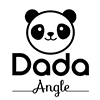News
Key Testing and Evaluation Criteria for Baby Cribs: Core Safeguards for Safety
As essential furniture for safeguarding infants' sleep and activity, the quality and safety of baby cribs directly impact children's health. A series of strict testing and evaluation standards are crucial to ensuring their reliability. The following details the evaluation criteria for core tests, including the cross-cut test, load-bearing test, and drop test.1. Surface Coating Adhesion: Cross-Cut Test
Test Objective
Infants often gnaw or scratch the crib surface, and if the coating peels easily, it may lead to harmful substance ingestion or scratches. This test assesses the adhesion of surface coatings (e.g., paint, film) to ensure they do not detach during daily use.
Test Method
- Use a knife to cut a 10×10 or 6×6 grid on the coating, penetrating through to the base material.
- Apply special adhesive tape to the grid area and tear it off quickly and vertically.
Evaluation Criteria
- Grade 0: Smooth cutting edges with no coating peeling, indicating excellent adhesion for safe use.
- Grade 1: Slight peeling at grid intersections, with an area ≤5%, meeting basic safety requirements but with slightly lower durability.
- Grade 2: Partial peeling along cutting edges or intersections, with an area of 5%–15%, requiring cautious assessment for potential long-term peeling.
- Grade 3: Peeling area of 15%–35%, indicating poor adhesion and safety risks; not recommended for the market.
- Grade 4 (35%–65% peeling) and Grade 5 (>65% peeling): Severely unqualified,严禁 (strictly prohibited) from sale.
2. Structural Strength and Stability: Load-Bearing Test
Test Objective
Infants' movements like rolling, playing, or standing challenge the crib's structural strength. This test simulates real-world stress to check if the crib can withstand daily use without structural damage.
Test Method
- Static Load Test: Evenly place standard counterweights (e.g., 50kg or more) on the mattress support for 12–24 hours, observing for deformation, cracks, or loose parts.
- Dynamic Load Test: Use mechanical devices to simulate impact forces from infants' activities, applying cyclic pressure hundreds to thousands of times to test durability.
Evaluation Criteria
- No obvious deformation (e.g., frame bending ≤5mm), loose parts, or welding cracks during the test.
- The crib must remain functional (e.g., adjustable guardrails) and structurally stable after testing. Any failure in the above criteria deems the crib unqualified.
3. Packaging Transport Safety: Drop Test
Test Objective
Cribs undergo multiple transport stages, risking collisions or falls. This test evaluates packaging's protective capability to ensure the product arrives intact.
Test Method
Drop the fully packaged crib from specified heights (50–150cm, based on weight) onto a hard surface from different angles (faces, edges, corners) for 3–6 times.
Evaluation Criteria
- No structural fractures, deformations, missing parts, or extensive coating damage after testing.
- Frame breakage, critical component damage (e.g., inoperable guardrails), or severe deformations affecting safety or usability are grounds for failure, requiring packaging improvements.
4. Other Key Evaluation Criteria
Dimensions and Clearance Standards
- Guardrail Height: ≥26cm from the mattress support to prevent infants from climbing over.
- Clearance Requirements: Spacing between slats <6cm to avoid head entrapment, while avoiding excessively narrow gaps that may pinch limbs.
Material Safety Standards
- Hazardous Substance Limits: Strict control of heavy metals (lead, mercury, cadmium) and harmful substances (formaldehyde, phthalates) in materials, complying with standards like ASTM (US) or EN (EU).
- Material Strength: Woods must be strong and tough; plastic parts should resist aging and impact for long-term safety.
Chemical Safety Testing
Beyond material limits, chemical migration tests simulate gnawing or saliva contact to detect substance leakage, ensuring no health risks from direct contact.
The comprehensive testing and criteria for baby cribs—from material selection to packaging—safeguard product safety. Purchasers and manufacturers must strictly follow these standards to create a reliable sleeping environment for infants.
Categories
Latest News
- Why Our Foldable Baby Crib Sells o2025-11-09
- Reliable Solid Wood Baby Crib Manu2025-11-07
- Professional Solid Wood Baby Crib 2025-10-28
- Overview of Crib Certification Req2025-07-01
- Key Testing and Evaluation Criteri2025-07-01
Contact Us
Contact: Tracy
Phone: +8618113796195
Tel: +8618113796195
Add: China
